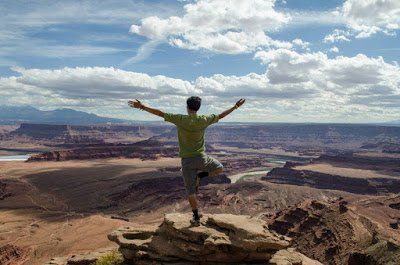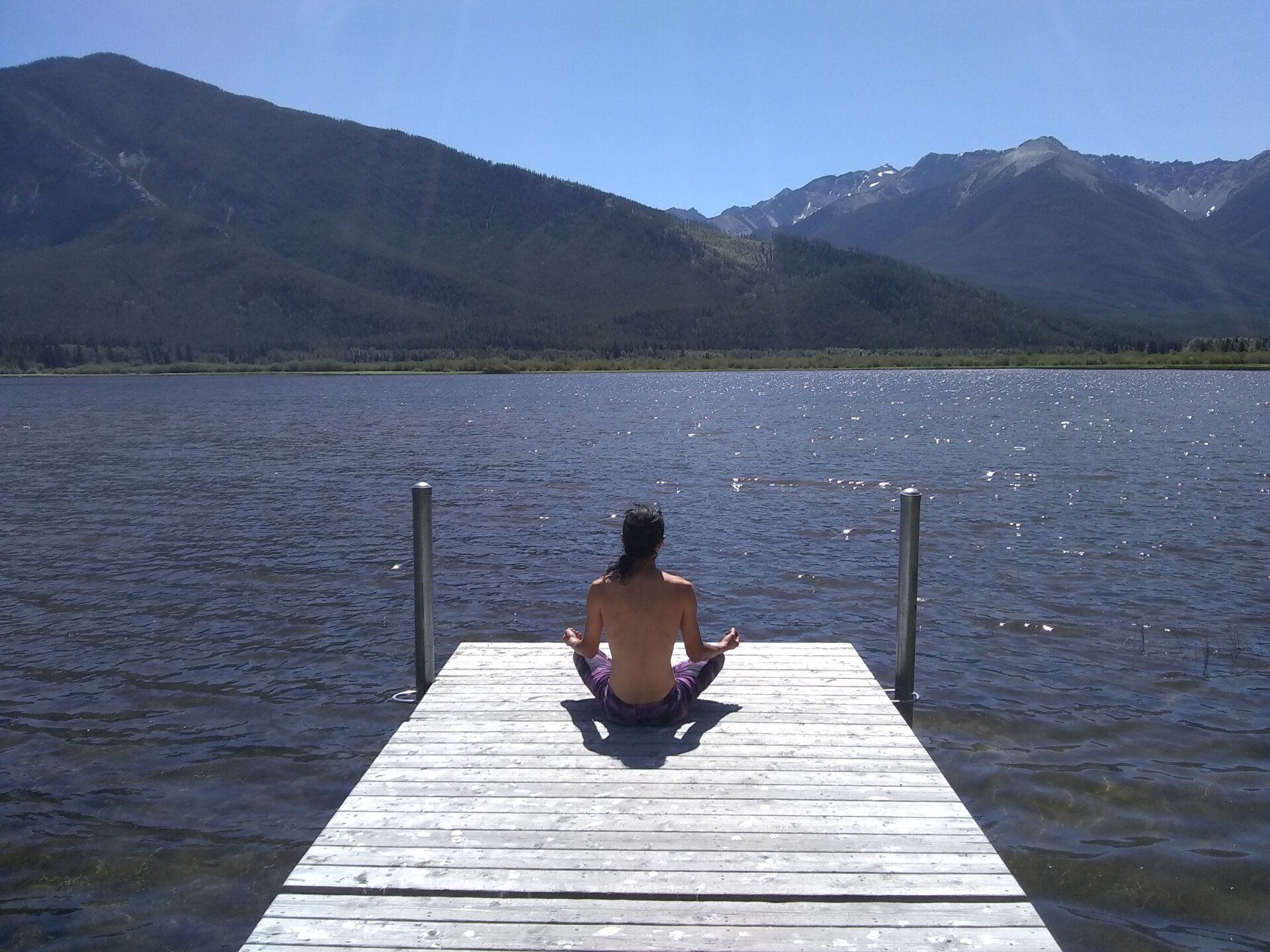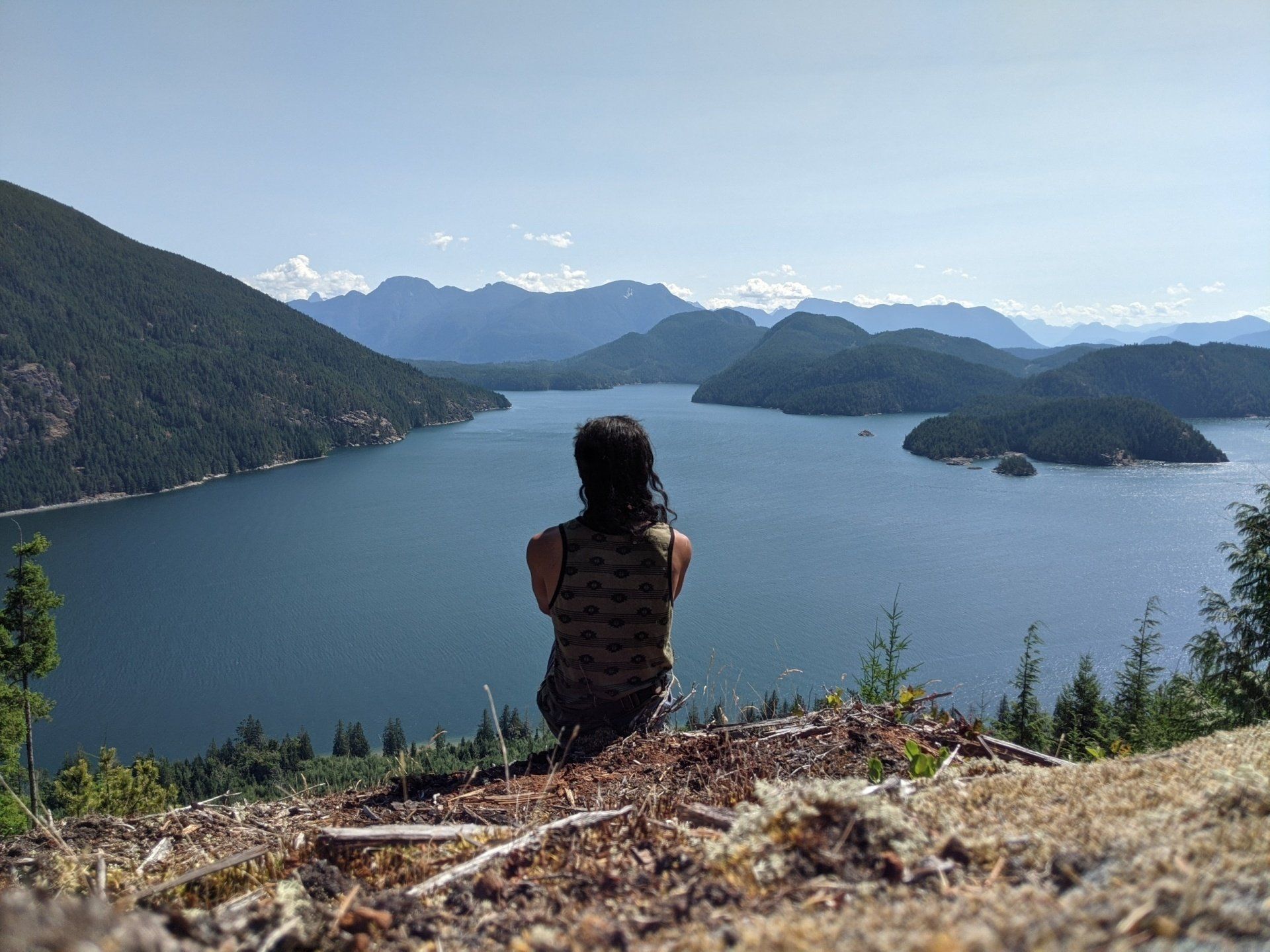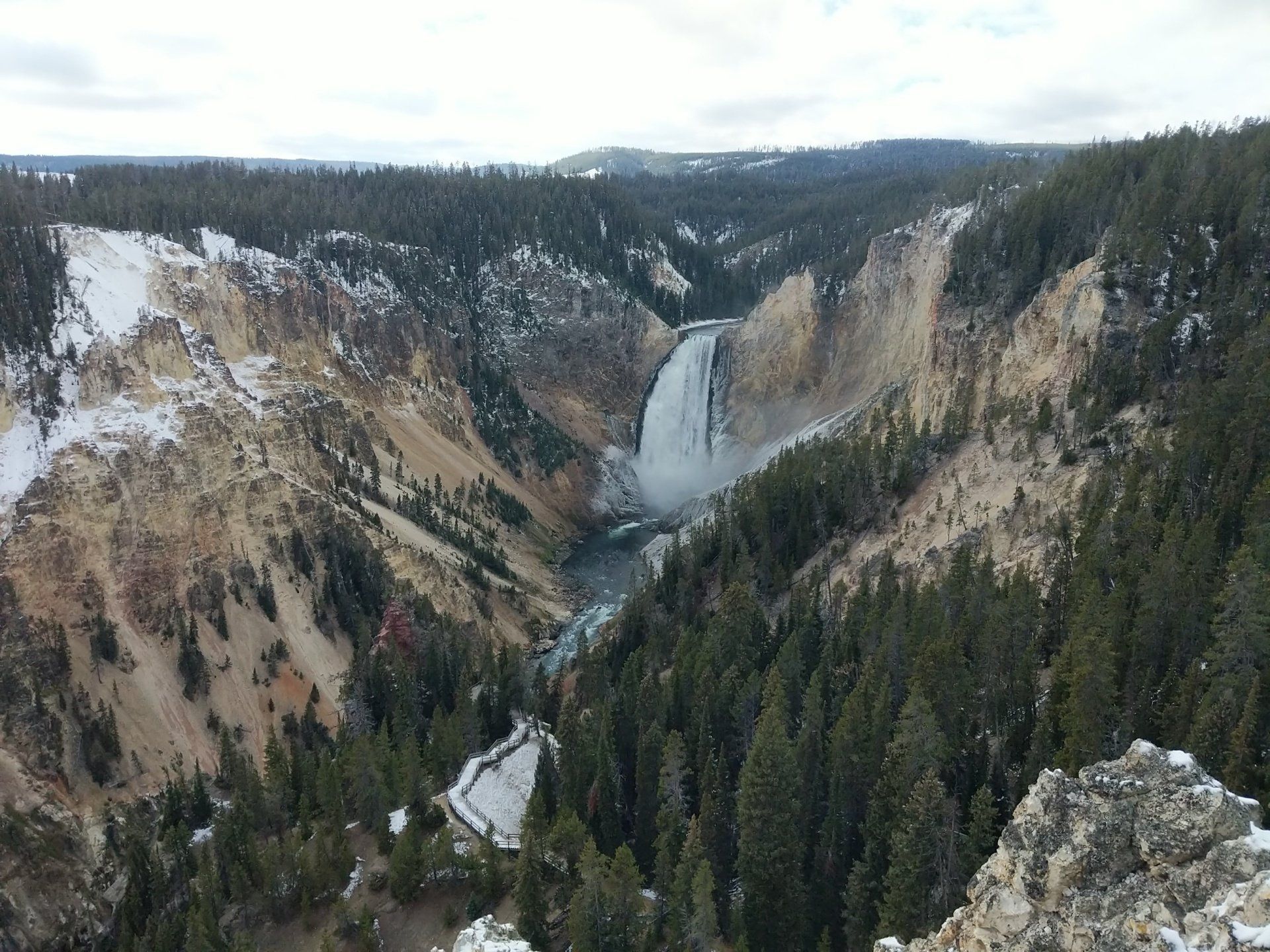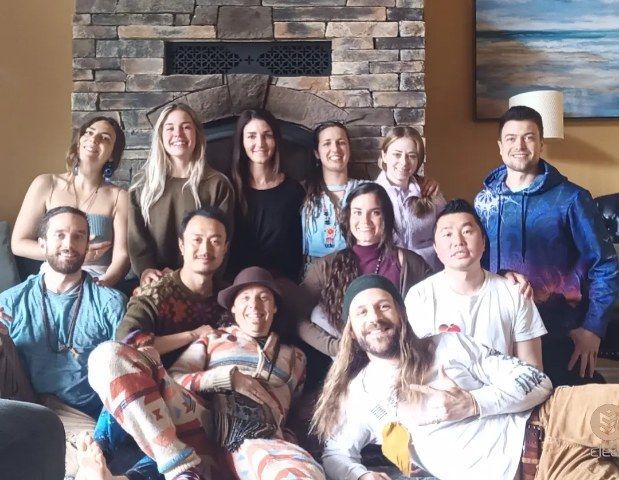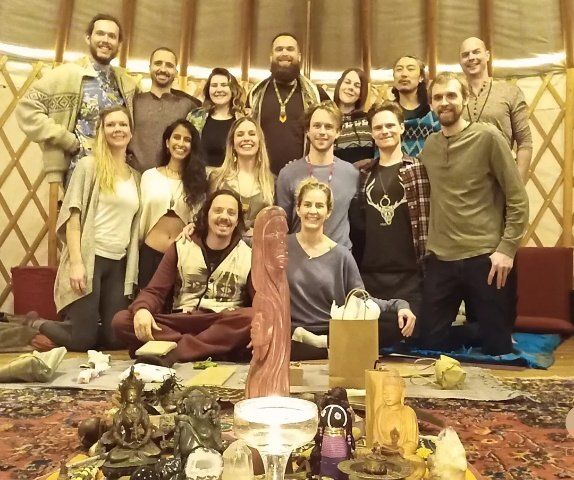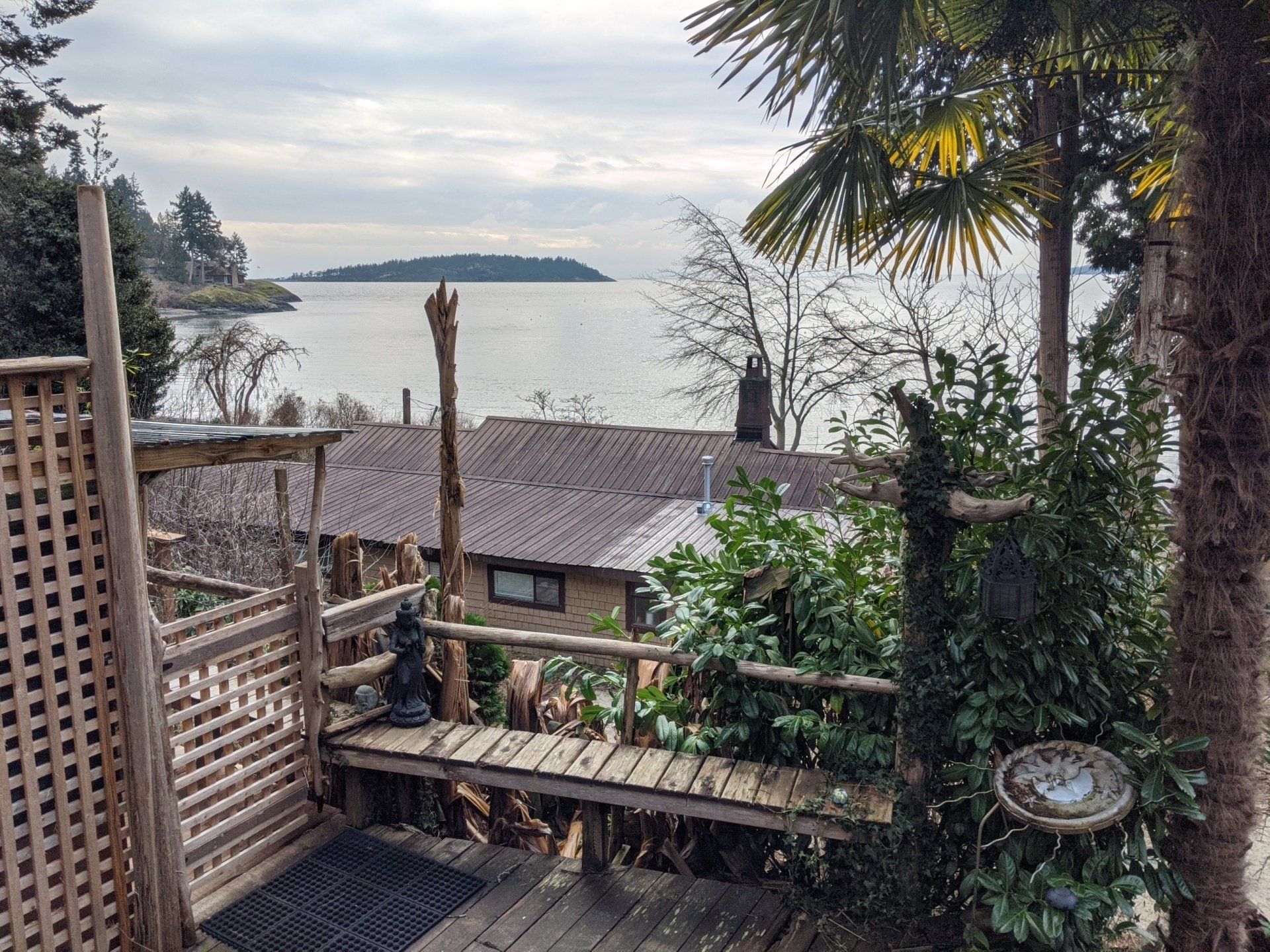Originally published January, 2019
Along my path towards understanding myself and the universe, I've tried different types of meditation and yoga, as well as spent lots of time, whether in solitude or amidst chaos, pondering. One of the questions I often pondered about was what is meditation?
The answer, of course, like all things is not simple. It's as complex as there are people in the universe, for every individual has their own meditation. Therefore, science could never adequately explain meditation, because science seeks to isolate individual parts in order to understand them, without understanding how they fit into the whole.
The way I have come to see meditation today eventually came from observation and awareness of my mind, as well as a scientific understanding of the brain. Obviously my perception of how the mind works is just that, one perception among many posited by experts and amateurs alike. In the end, whatever works for you, I respect that.
I hope this serves as both an insightful discourse on meditation, as well as a practical guide towards improving your meditation practice!
Highway of Thoughts
I like to use a simple analogy to explain how the mind works...
I see the mind as a highway, a conduit for your thoughts.
Individual thoughts (emotions count as thoughts in this analogy) flow in and out of our consciousness, represented by cars travelling down our mental highway.
In order for the traffic to move, for us to process these thoughts, we need time to focus on them. In order to focus on them properly we need to give ourselves space. The concept of space here is a bit abstract, but essentially we need to distance ourselves from distractions and put ourselves in a peaceful unstimulating environment.
Time + Space = Solitude
Thus we need solitude in order to process our thoughts. We need to process our thoughts in order to prevent them from building up and nagging us, which leads to chronic stress and unhappiness among other negative outcomes. Unfortunately, most of us don't give ourselves enough solitude to be able to do this.
I had a lot of solitude living in this cabin through summer of 2017
In our typically busy and stressful lives, we don't slow down and take enough time to ourselves. And we are almost always around other people, constantly stimulated by smartphones or TVs, crowding our minds. We're almost never alone, giving our minds the space it needs to think. The result is that cars build up on the highway of our minds, causing them to become congested with thoughts.
The Purpose of Meditation
So why do we meditate? There are of course many reasons - calm, gratitude, awareness, lowering stress and anxiety - but they all seem to boil down to the same basic goal in my mind: to address the congestion of thoughts and feelings in our head.
Because when we are able to untangle and process all those nagging thoughts, we eliminate the congestion and clear our minds, allowing space for positive thoughts to move in.
Thus the root purpose of these meditations is to provide inner solitude, through providing our minds the time and space to process our thoughts. So while there are many different types of meditation out there, they all share the singular purpose of providing a framework, which people can follow, for accessing our solitude.
So if the true purpose of meditation is for us to access our solitude, how do we do that? Every individual has their own meditation, that is their own way of accessing their solitude. Thus, if traditional meditations are not working for you, it is time to expand your definition of meditation.
Physical Space = Mental Space
My most effective meditation is a very simple one that lies outside the conventional definition - being out in nature. I have spent a lot of extended time in nature in solitude, camping in the woods for up to a month, living in a cabin for a summer, going on multi-day treks deep into the wilderness.
Why do we enjoy being out in nature so much? Yes, nature is beautiful. But there is more to it. For one thing, our eyes are not evolved to look at screens. Staring at something so close causes strain in the muscles behind the eyes, leading to shortsightedness. Our eyes are evolved to see longer distances, to be able to spot predator or prey, back in our hunter gatherer days. When we go outside where we are able to see farther, we reduce the strain in our eyes allowing the muscles behind it to relax.
In its own very similar way our minds also benefit from being outside.
Science has not made much progress on consciousness, but some philosophers and thought leaders believe that our consciousness extends outside of our brains, beyond our skulls, and is part of a stream of consciousness that exists all around us. I for one, believe this too, and feel subtle effects of this phenomenon.
For example, when I'm in a room full of clutter, or at a crowded party or bar, the lack of space and overstimulation crowds my mind and I can't think. But when I'm outside in a wide open space, I just feel much calmer and can think more clearly. It's as if my consciousness is allowed to expand out of my skull, spread its wings and decompress out into the physical space around me.
It's as if, the thoughts in my mind have more room to flow, or the cars have more room to drive on the highway of my mind, reducing congestion.
I believe this is partly why so many people love being on the beach. The ability to see far into the horizon relaxes ones eyes, and the big sky allows ones mind to expand into and fill that sky all the way to the horizon.
My own favourite meditation spot is the top of a mountain. Hiking to the top is a physical goal oriented activity where I enter a flow state, allowing hours to pass by without thinking or getting distracted. When I reach a summit with a beautiful panoramic view, it feels as if my consciousness expands to encompass all the mountains, forests and lakes that I can see. The feeling is nothing less than magic.
Meditation Through Flow State
Have you ever engaged yourself in an activity so thoroughly that time seemed to fly by? Many creative people understand this feeling, whether it's hiking, playing music, dancing or drawing. For others it can be playing sports, doing yoga, or even having sex.
When we give our entire attention to one activity, we can enter a flow state, where nothing else exists; our focus, clarity and performance improves, yet our minds are a blank canvas, not thinking about what we're doing - we're just going with the flow or in the zone.
The article at https://mrsmindfulness.com/how-you-can-enter-mindfulness-in-4-simple-steps/ says that in a state of flow "brain waves operate similarly to the brain waves of those in meditation" and that "flow is a state of meditation."
I began delving into creative pursuits only in recent years, and began to discover this concept of flow state through activities such as dancing and playing guitar. I realized that, for some people, their meditation is a passionate pursuit, whether purely creative or involving the body.
There is Nothing Wrong with Thinking
It's okay to think during meditations! Remember, meditation serves the basic function of giving your mind time and space to process your thoughts. If your head is full of thoughts during meditation, it simply means that you have a lot of thoughts that need processing.
Instead of getting frustrated that you can't clear your mind, simply sit with your thoughts, be present with them. Eventually you will resolve those nagging thoughts and they will eventually disappear!
Lately, I have been doing a mindfulness practice everyday, alternating between either 30-40 minutes of yoga or 10-15 minutes of meditation. Though I generally keep a calm mind, like everyone else I am still prone to nagging thoughts. So at the start of every meditation (and the end of every yoga session) I allow my mind to wander and think as it pleases, and sit with any nagging thoughts that arise.
I simply make sure my thoughts don't get too jumbled, where it becomes counter productive. If they do, I make sure to reset and find my breath. I find that after about 5 minutes my mind starts to clear and find its stillness, or transform its narrative from a negative to a positive one. By the end of my meditation the narrative settles on purely positivity and gratitude.
Back to Basics
Four years ago I quit my job and since then I've gone on overseas travels of 10 months, 8 months and 2.5 months, embarked on 2 summers road tripping in western Canada. I did most of these travels solo, without much of an agenda, and spent a large majority of it in nature.
For me, my own success in achieving stillness of mind still comes down to giving myself those basic ingredients of time and space, and lots of them! Today the traffic of thoughts in my mind flows pretty freely, without much congestion.
5 months travelling in India, I learned a lot about myself
It may sound crazy to quit your job and live free for awhile (it sure did when I first made the decision!) but this really does speak to a greater problem that the work-life paradigm in our society is way out of balance. Most people have accumulated enough stress for a lifetime, and can't undo it all with just occasional meditation.
If meditation is not enough, going on an extended vacation or sabbatical can give you the time you need. And instead of travelling to cities on whirlwind tours, spending time in nature can give you the space for your mind to unwind into a meditative state.
In your daily routine, simplify your schedule, learn to say no and not accept every invitation! Turn off the TV, radio or phone and learn to sit with your thoughts in a quiet environment. A daily yoga and meditation of just 10 minutes can, if not clear the mind, at least process pesky thoughts so they don't bother you through the day.
Or if you have an individual pesky thought or feeling about a person or an event that is bothering you in a negative way, I encourage you to, instead of avoiding or distracting yourself, sit with that thought. Only by addressing it can you resolve it and it will eventually go away. Otherwise, if you ignore it it will fester and grow, like a cancer.
There is a meditation for everyone! So don't give up, find your meditation. Your mind will thank you for it.
